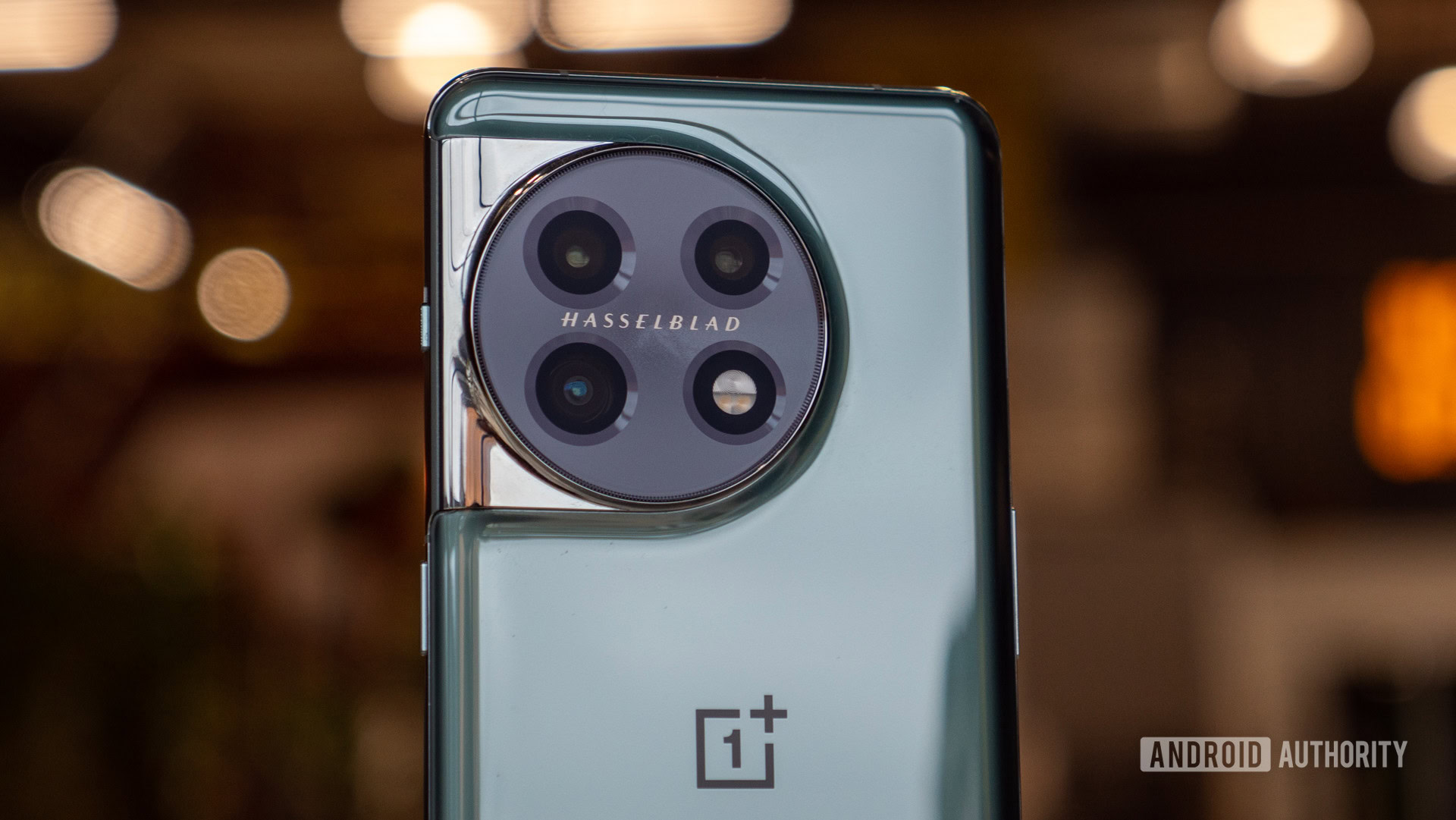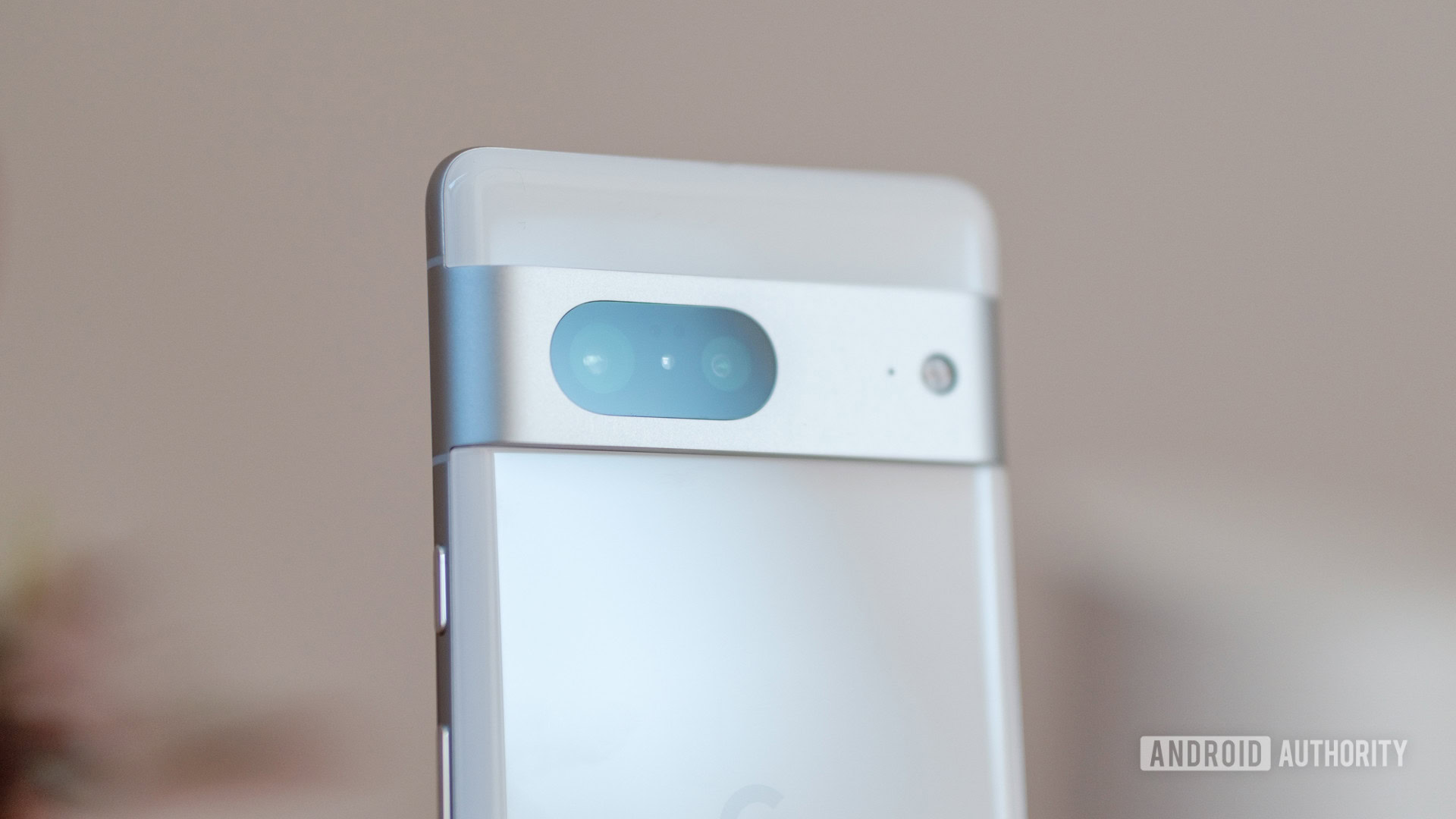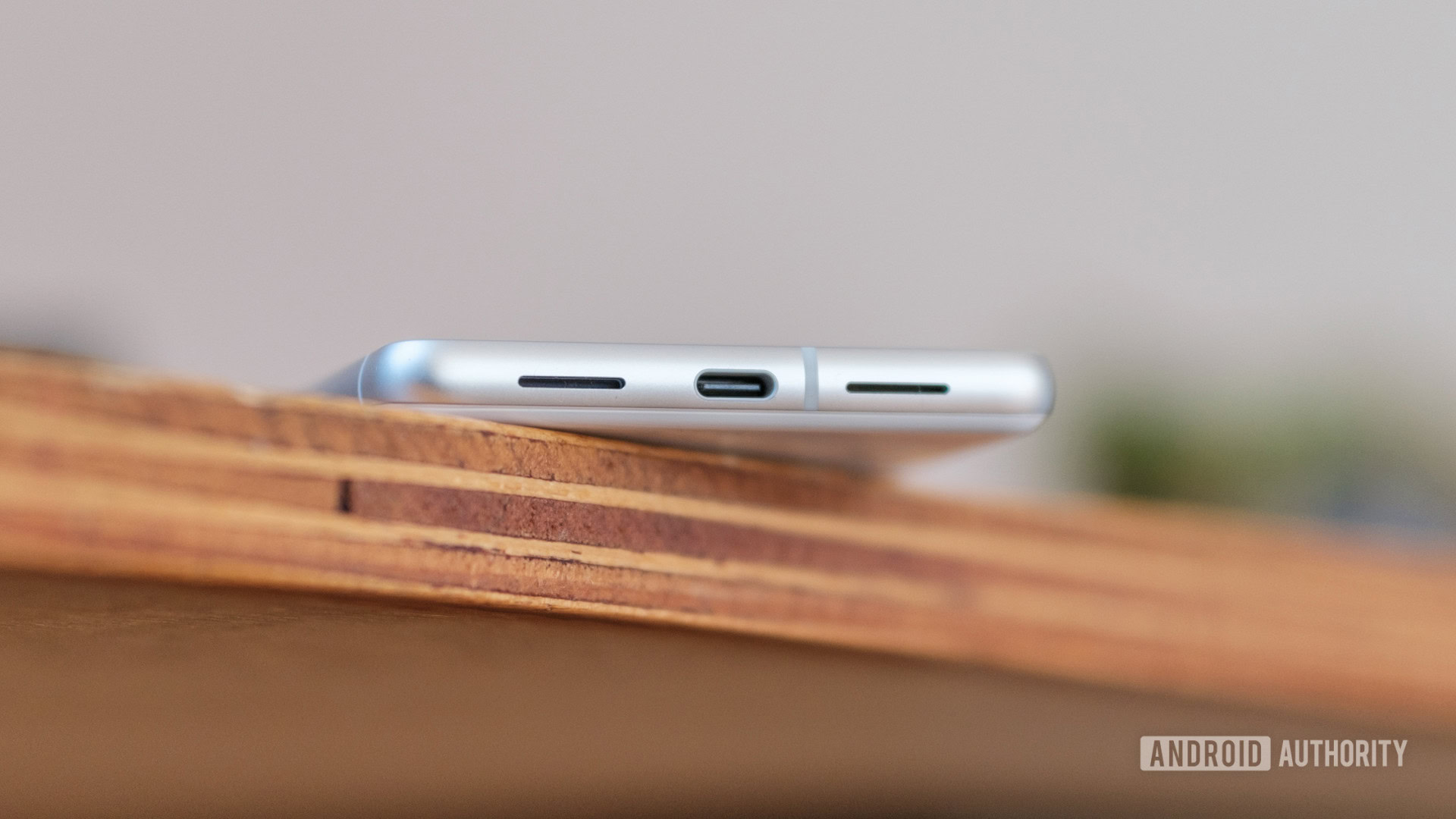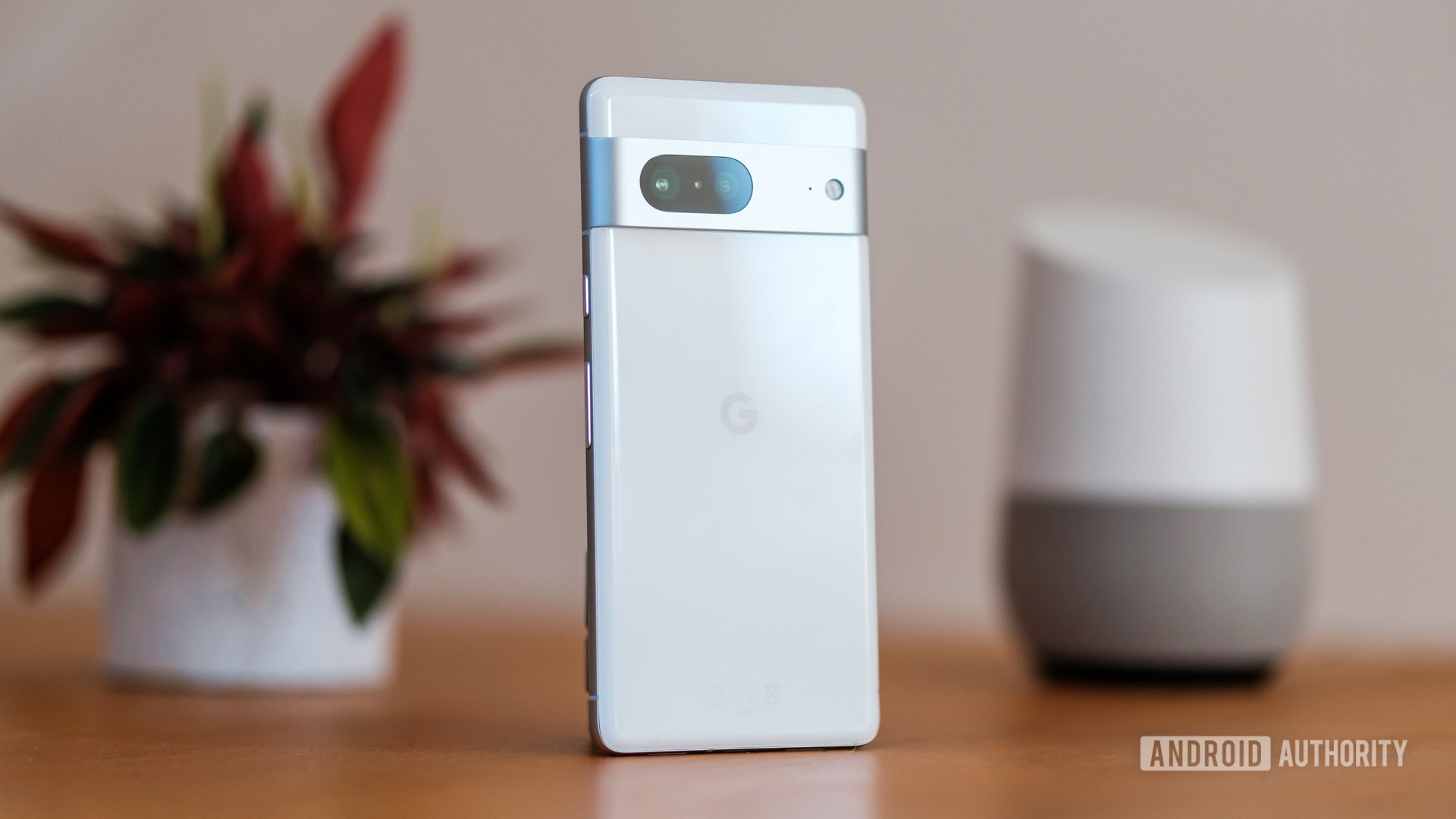Affiliate links on Android Authority may earn us a commission. Learn more.
OnePlus 11 vs Google Pixel 7: Which phone should you buy?



The affordable flagship space hosts some of the more interesting smartphones on the market. It’s where OnePlus made its name and Google currently leads the pack. In 2023, these two companies are once again going head to head. The OnePlus 11 seems a return to the old, simpler OnePlus philosophy, while the Pixel 7 builds on the solid footing established by the Pixel 6. But which phone should you buy? Find out below in our OnePlus 11 vs Pixel 7 comparison.
OnePlus 11 vs Google Pixel 7: At a glance
Find a quick summary of the strengths and weaknesses of each phone below.
- The Google Pixel 7 is $100 cheaper than the OnePlus 11.
- The OnePlus 11 uses the Snapdragon 8 Gen 2 SoC, while the Pixel 7 uses Google's Tensor G2 chipset.
- Google's Pixel 7 supports 20W wired and wireless charging, while the OnePlus 11 only supports 80W wired charging.
- The Google Pixel 7 has a higher IP rating (IP68) than the OnePlus 11 (IP64).
- The OnePlus 11 has a larger, denser, and faster screen than the Pixel 7.
- OnePlus' 11 has three rear cameras (main, ultrawide, and telephoto portrait), while the Pixel 7 has two (main and ultrawide).
Keep reading to discover more about the OnePlus 11 and the Google Pixel 7.
OnePlus 11 vs Pixel 7: Specs
| OnePlus 11 | Google Pixel 7 | |
|---|---|---|
Display | OnePlus 11 6.7-inch LTPO AMOLED 20.1:9 aspect ratio 3,216 x 1,440 resolution 120Hz variable refresh rate (1 to 120Hz) 1,300 nits screen brightness 525ppi | Google Pixel 7 6.32 inch OLED 20:9 aspect ratio 2,400 x 1,080 pixels 90Hz 1,400 nits screen brightness 416ppi |
Processor | OnePlus 11 Qualcomm Snapdragon 8 Gen 2 | Google Pixel 7 Google Tensor G2 |
GPU | OnePlus 11 Adreno 740 | Google Pixel 7 Mali-G710 MP07 |
RAM | OnePlus 11 8GB or 16GB LPDDR5X | Google Pixel 7 8GB LPDDR5 |
Storage | OnePlus 11 128GB UFS 3.1 or 256GB UFS 4.0 No expandable storage | Google Pixel 7 128/256GB UFS 3.1 No expandable storage |
Power | OnePlus 11 5,000mAh battery 80W wired SuperVOOC charging No wireless charging | Google Pixel 7 4,355mAh battery 20W wireless charging 20W wired charging Up to 72 hours of runtime with Extreme Battery Saver |
Cameras | OnePlus 11 Rear: - 50MP wide, 1/1.56-inch sensor, OIS, EIS, ƒ/1.8, 1.0μm, Sony IMX890 - 48MP ultrawide, 1/2-inch sensor, ƒ/2.2, 115-degree FoV, Sony IMX581 - 32MP portrait telephoto, 1/2.74-inch sensor, ƒ/2.0, Sony IMX709 Front: - 16MP, EIS, ƒ/2.45, 1.0μm, Sony IMX471 | Google Pixel 7 Rear: - 50MP main, 1.2 μm, ƒ/1.85, 82-degree FoV 1/1.31-inch sensor, OIS and EIS - 12MP ultrawide, 1.25 μm, ƒ/2.2, 114-degree FoV - Laser AF Front: - 10.8MP, 1.22 μm, ƒ/2.2, 92.8-degree FoV |
Audio | OnePlus 11 Dual "Reality" speakers Dolby Atmos support No 3.5mm headphone port | Google Pixel 7 No 3.5mm headphone port |
Video | OnePlus 11 8K video at 24fps 4K video at 30/60fps 1080p video at 30/60fps 720p video at 30/60fps Super Slow Motion: 1080p video at 240fps, 720p video at 240/480fps Time-Lapse: 4K/1080p at 30fps | Google Pixel 7 4K video at 30/60fps 1080p video at 30fps/60fps 10-bit HDR video Slo-mo video support: 1080p at 240fps |
Durability | OnePlus 11 Gorilla Glass 5 back Gorilla Glass Victus display IP64 rating | Google Pixel 7 Gorilla Glass Victus back Gorilla Glass Victus display IP68 rating |
Connectivity | OnePlus 11 Wi-Fi 7 supports 802.1 a/b/g/n/ac/ax/be Bluetooth 5.3 NFC support eSIM 2G, 3G, 4G, 5G | Google Pixel 7 Wi-Fi 6E supports 802.1 a/b/g/n/ac/ax Bluetooth 5.2 NFC support eSIM 2G, 3G, 4G, 5G |
Biometrics | OnePlus 11 In-display fingerprint reader Face unlock (software) | Google Pixel 7 In-display fingerprint reader Face Unlock |
Software | OnePlus 11 Oxygen OS 13 based on Android 13 4 years of Android updates 5 years of bimonthly security patches | Google Pixel 7 Android 13 5 years of Pixel updates |
Dimensions and weight | OnePlus 11 163.1 x 74.1 x 8.53mm 205 grams | Google Pixel 7 155.64 x 73.16 x 8.7mm 197 grams |
Colors | OnePlus 11 Titan Black (128GB model) Titan Black or Eternal Green (256GB model) | Google Pixel 7 Lemongrass Obsidian Snow |
In the box | OnePlus 11 OnePlus 11 80W SuperVOOC power adapter USB-C to USB-A cable USB dongle (Type A to C) Pre-applied screen protector Protective case Paperwork | Google Pixel 7 Google Pixel 7 1m USB-C to USB-C cable (USB 2.0) Quick Start Guide Quick Switch Adapter SIM tool |
The OnePlus 11 and Pixel 7 make for interesting case studies in the sub-flagship segment. OnePlus invests heavily in the display, charging, and performance stakes. The Pixel 7 looks to build quality and durability, software support, and imaging performance. The two devices feature few similarities, but both base models fall below the $700 mark.
Let’s start by comparing the two phones’ screens — one of the biggest points of difference. OnePlus opts for a 6.7-inch 120Hz AMOLED with a 3,216 x 1,440 resolution. That’s a much larger, faster, and denser panel than that fitted to the Pixel 7. Google trims display fat to 6.3 inches, with a maximum refresh rate of 90Hz, and a resolution of 2,400 x 1,080. Despite these discrepancies, both phones’ displays received plaudits in their respective reviews. You won’t have issues seeing either screen outdoors. Both top 1,000 nits of peak brightness, with the Pixel 7 stretching slightly further to 1,400 nits than the OnePlus 11’s 1,300 nits.
As for what’s powering these screens, the OnePlus 11 has the Pixel 7 cornered. It uses the beefy Snapdragon 8 Gen 2 SoC, which yielded much better single and multi-core scores than the Tensor G2 in our latest tests. Beyond benchmarks, the Pixel 7 excels in real-world performance and is faster than its predecessor. Our review found multitasking on the Pixel 7 a “breeze, particularly when paired with the display’s 90Hz default mode.”
Mobile gamers will have a tougher time finding joy with the Pixel 7. The Mali-G710 MP7 GPU sees no upgrades over the original Tensor chipset, which means it falls further behind the OnePlus 11’s Adreno 740 in this particular use case. To be fair to Google, Tensor G2 wasn’t built with raw gaming muscle in mind. Additionally, we did experience substantial throttling with the OnePlus 11, so it’s not exactly a gamer’s dream.
In terms of RAM and storage, neither device accepts expansion cards. The OnePlus 11 uses faster RAM and storage systems, though. It can be had with 256GB of UFS 4.0 (the 128GB model uses UFS 3.1) and 16GB of LPDDR5X RAM. The Pixel 7 can be had in 128GB or 256GB storage guises, too, but it settles for the UFS 3.1 standard and just 8GB of LPDDR5 RAM.
The Pixel 7 gets one over the OnePlus 11 regarding durability, with its IP68 water and dust resistance rating. Notably, this has become pretty standard across most well-kitted devices. However, the OnePlus 11 only fetches an IP64 rating. Google also employs Gorilla Glass Victus front and back on the Pixel 7, while OnePlus uses Victus up front and Gorilla Glass 5 at the rear.
Finally, Google’s phone (narrowly) takes home another win in the long-term software support category. It promises users five years of updates, while the OnePlus 11 settles for four years of Android updates and five years of security updates bimonthly.
OnePlus 11 vs Pixel 7: Size comparison
Neither phone is the largest on the market, but the Pixel 7 comes closer to compact flagship than the OnePlus 11.
With a larger screen comes a larger body. The OnePlus 11 is 12mm taller than the Pixel 7. It’s also wider by a hair and heavier by eight grams. In real-world terms, the OnePlus 11 will take up more vertical space in your pocket by some margin. The Pixel 7 is nominally thicker than the OnePlus 11, but you’d do well to notice the 0.2mm difference.
Aesthetically, the two devices couldn’t be more different. The rear panels take on widely differing designs. Google sticks to its trademark horizontal camera bar, while OnePlus adopts an all-new off-center circular design. Personally, there’s something alluring about the Pixel 7’s stylings, but your mileage may vary.
OnePlus 11 vs Pixel 7: Camera

On paper, the OnePlus 11 has the most impressive camera lineup. With its Hasselblad branding, the system is headlined by a 50MP sensor with OIS and EIS, a 48MP ultrawide with a 115-degree FoV, and a 32MP telephoto lens for portraits. In practice, however, we were fairly let down by its performance in challenging scenarios.
While the main camera shoots bright and punchy images when the sun’s out, it produces flat, muddied shots when the clouds come in. Photos from the ultrawide lens could be mistaken for another phone entirely. The color profile is cooler than the main camera, although the lack of distortion does impress. Thankfully, OnePlus resisted the urge to slap a macro lens on the OnePlus 11. Instead, the ultrawide shooter pulls double duty and does a fairly respectable job.
However, where the OnePlus 11 excels is its portrait detection. In most experiences, object edges are clearly and naturally defined, while the blur effect is pleasing. As for zoom performance, anything beyond 2x for the 32MP sensor goes beyond optical reach, and therefore quality drop-off is noticeable.
On the other side of the fence, the Pixel 7 may be one of the best camera phones ever made, at least at this price point. Its dual-lens camera array comprises a 50MP main shooter and a 12MP ultrawide. Right off the bat, you don’t get a dedicated zoom or portrait lens here. The Pixel 7 also lacks the OnePlus 11’s macro mode. However, the cameras you get and their performance largely compensate for this.
Shots with the main camera are consistent across various scenarios, including low and diffused light. Color reproduction and metering were accurate and pleasing in most shots taken with the 50MP sensor. Google’s machine learning smarts come to the fore when using its Super Res Zoom feature, but in practice, shots only up to 3x reach are worth phoning home about. If you want a dedicated telephoto lens, you must shell out for the Pixel 7 Pro.

Google retains plenty of camera modes from the Pixel 6, including Action Pan, Long Exposure, and Night Sight. Notably, the latter is now much faster to capture images — a nice quality-of-life upgrade. Once you’re done capturing an image, Google gives you plenty of tools to polish them further, including the surprisingly useful Magic Eraser.
The Pixel 7 also gains a Cinematic video mode that transfers Google’s still Portrait mode effects to video. Our experience with the feature was hit-and-miss. It’s a nice feature to toy around with, but you’ll notice focus and sharpness issues around subjects.
What about normal video recording? The OnePlus 11 tops at 8K at 24fps, while the Pixel 7 can only manage 4K at 60fps. Both phones can capture slow-motion video at 240fps at 1080p resolution.
Finally, the OnePlus 11’s performance is pretty good for those who love their selfies. The 16MP shooter can employ the same background blur effects used by its rear portrait camera, while color reproduction is accurate. It doesn’t pack the clarity of the rear cameras, but to capture faces, the OnePlus 11’s selfie shooter is more than adequate.
The Pixel 7’s selfie performance doesn’t blow the OnePlus 11 out of the water. The 10.8MP snapper brings adequate background separation to the table, but images are far softer than the rear cameras. Usually, this would be a strike against the phone, but we found that it compensated for Google’s tendency to oversharpen objects in images.
OnePlus 11 vs Pixel 7: Battery and charging

OnePlus and Google differ wildly in powering and charging their respective devices. OnePlus remains true to its fast-charging drive, offering 80W maximum speeds for the OnePlus 11 in the US. It even includes an 80W Super VOOC charger in the box, albeit with a USB-A connector. You’d be gravely disappointed if you were hoping for similarly-potent wireless charging. The OnePlus 11 does not support wireless charging in any capacity.
While the Pixel 7’s charging speeds are much slower, it supports wireless charging. Google opts for a 20W maximum when connected to a cable or when the device is placed on a supported Qi wireless charger. Despite this convenience, the Pixel 7 is much slower to charge. You’ll need around 100 minutes to go from flat to 100%. For the OnePlus 11, you’ll need just 30 minutes.
OnePlus 11 vs Pixel 7: Price
OnePlus 11
- 128GB/8GB: $699
- 256GB/16GB: $799
Google Pixel 7
- 128GB/8GB: $599
- 256GB/8GB: $699
Both base models are well within reach for consumers compared to the true flagships of 2023. The OnePlus 11 is the more expensive of the two phones, starting at $699 for the 128GB storage version and jumping to $799 for the 256GB alternative.
Google continues to offer its cheaper flagship at $599, which makes it a compelling value proposition and undercuts the OnePlus 11 by $100. The priciest Pixel 7 variant costs the same as the cheapest OnePlus 11 model.
Both phones are available to purchase in the US at major retailers.
OnePlus 11 vs Pixel 7: Which should you buy?

There’s plenty to consider here, from OnePlus’ clear lead in the processing and power stakes, and Google’s more impressive value and photography performance.
While the OnePlus 11 feels like a return to origin for the company, we can’t help but feel that the Pixel 7 beats it at its own game. The Google phone offers a refined flagship experience at a price that embarrasses most mid-range phones. It offers a stellar point-and-shoot photography kit, good real-world performance, and Google’s long-term software support. It one-ups the OnePlus 11 in durability, offers wireless charging, and is by far the better value proposition.
That said, the OnePlus 11 still warrants its inclusion on your shopping list, especially if you want a phone with the beefiest chipset available, don’t particularly like the Pixel’s retro-modern styling, or don’t have nearly two hours to charge your phone.
Which is the better buy: OnePlus 11 or Google Pixel 7?

Blazing-fast wired charging
Excellent software promise
FAQs
The OnePlus 11 has an IP64 water and dust resistance rating, while the Pixel 7 has an IP68 rating. The Pixel 7 is more resistant to water than the OnePlus 7.
The OnePlus 11 does not have wireless charging support, but the Pixel 7 does. It supports 20W wireless charging.
No, neither the OnePlus 11 nor the Pixel 7 has a headphone jack.